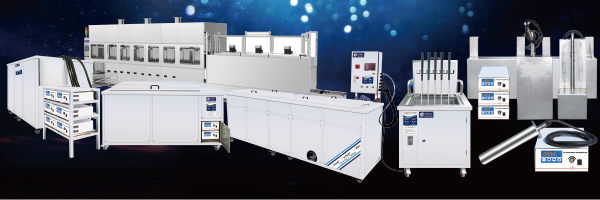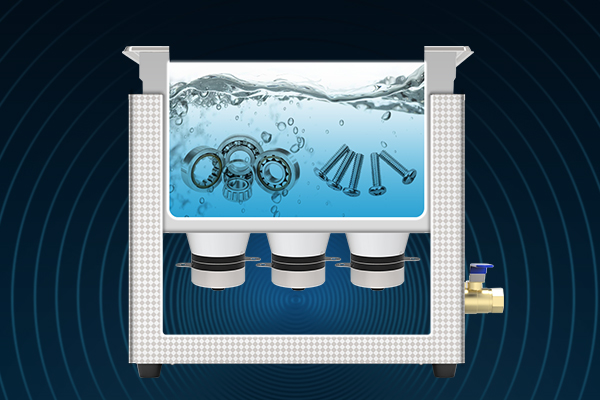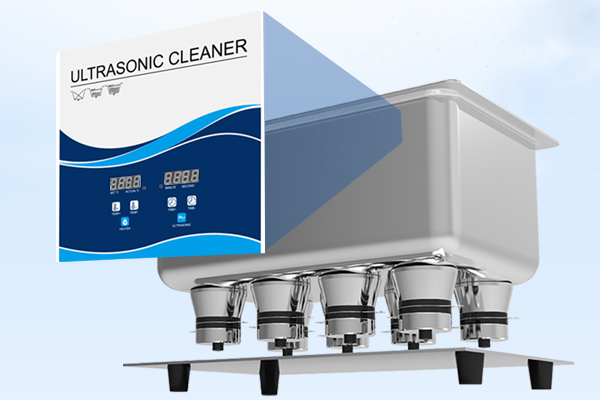In modern industrial settings, keeping machinery parts clean and well-maintained is crucial for ensuring efficiency, performance, and longevity. One of the most advanced and effective methods for cleaning machine parts is using an ultrasound cleaning machine. This technology, which relies on high-frequency sound waves to generate microscopic bubbles in a cleaning solution, offers numerous benefits that traditional cleaning methods often fail to provide. In this article, we will explore the technology behind ultrasound cleaning, its advantages, and its specific applications in various industries, focusing on how it can improve machine parts maintenance.
Understanding Ultrasound Cleaning Technology
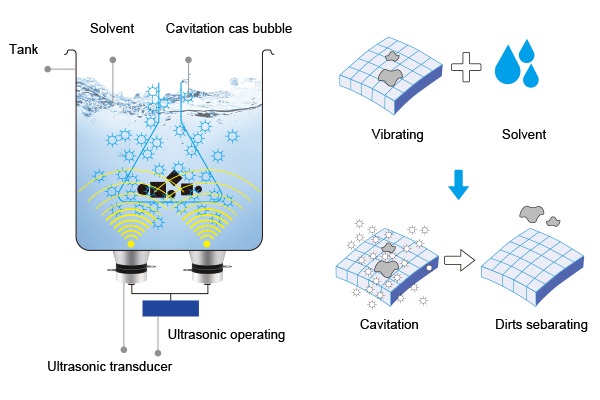
Ultrasound cleaning machines operate on the principle of cavitation, which occurs when high-frequency sound waves are passed through a liquid. These sound waves cause the formation of microscopic bubbles in the solution, which then implode with intense energy. This implosion creates a powerful scrubbing action that can dislodge even the most stubborn dirt, grease, oil, and other contaminants from machine parts.
Ultrasound cleaning is a precise and non-abrasive process, making it ideal for delicate and intricate components. The frequency of the sound waves used typically ranges between 20 kHz and 40 kHz, though higher frequencies can be employed for more delicate tasks. The solution used in these machines is typically water mixed with a specialized cleaning agent, though other solvents can be used depending on the nature of the contaminants.
Advantages of Ultrasound Cleaning for Machine Parts
- Enhanced Cleaning Efficiency Ultrasound cleaning offers a level of precision and efficiency that is hard to match with manual or mechanical cleaning methods. The cavitation effect allows for the cleaning of hard-to-reach areas, such as grooves, holes, and fine surfaces, which can be challenging to clean using traditional methods. The high-frequency sound waves ensure a thorough clean without damaging the part, making it ideal for sensitive components.
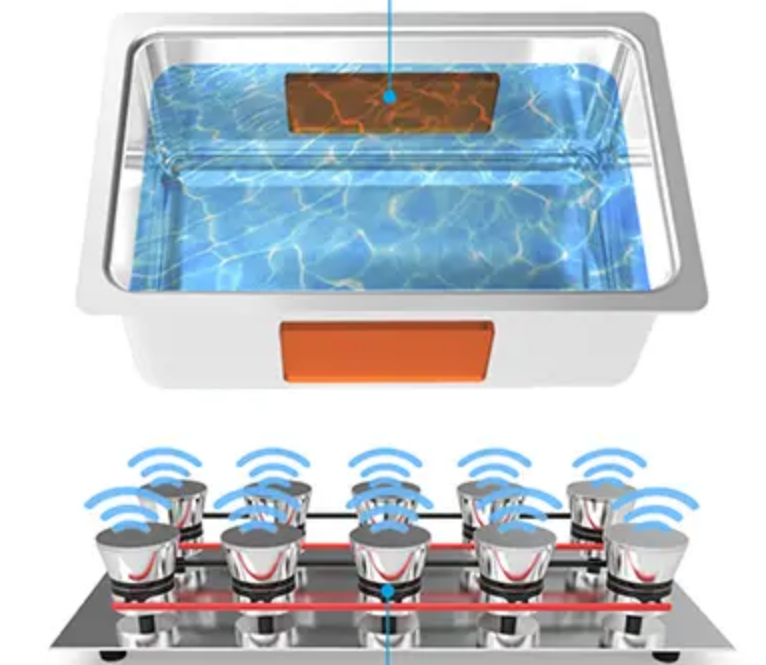
- Time-Saving and Cost-Effective Traditional cleaning methods, such as hand scrubbing, brushing, or using abrasive materials, can be labor-intensive and time-consuming. Ultrasound cleaning machines significantly reduce cleaning time by automating the process and delivering consistent results. This not only speeds up the cleaning process but also reduces the need for frequent replacements of cleaning agents, as ultrasonic machines use less solvent compared to manual cleaning.
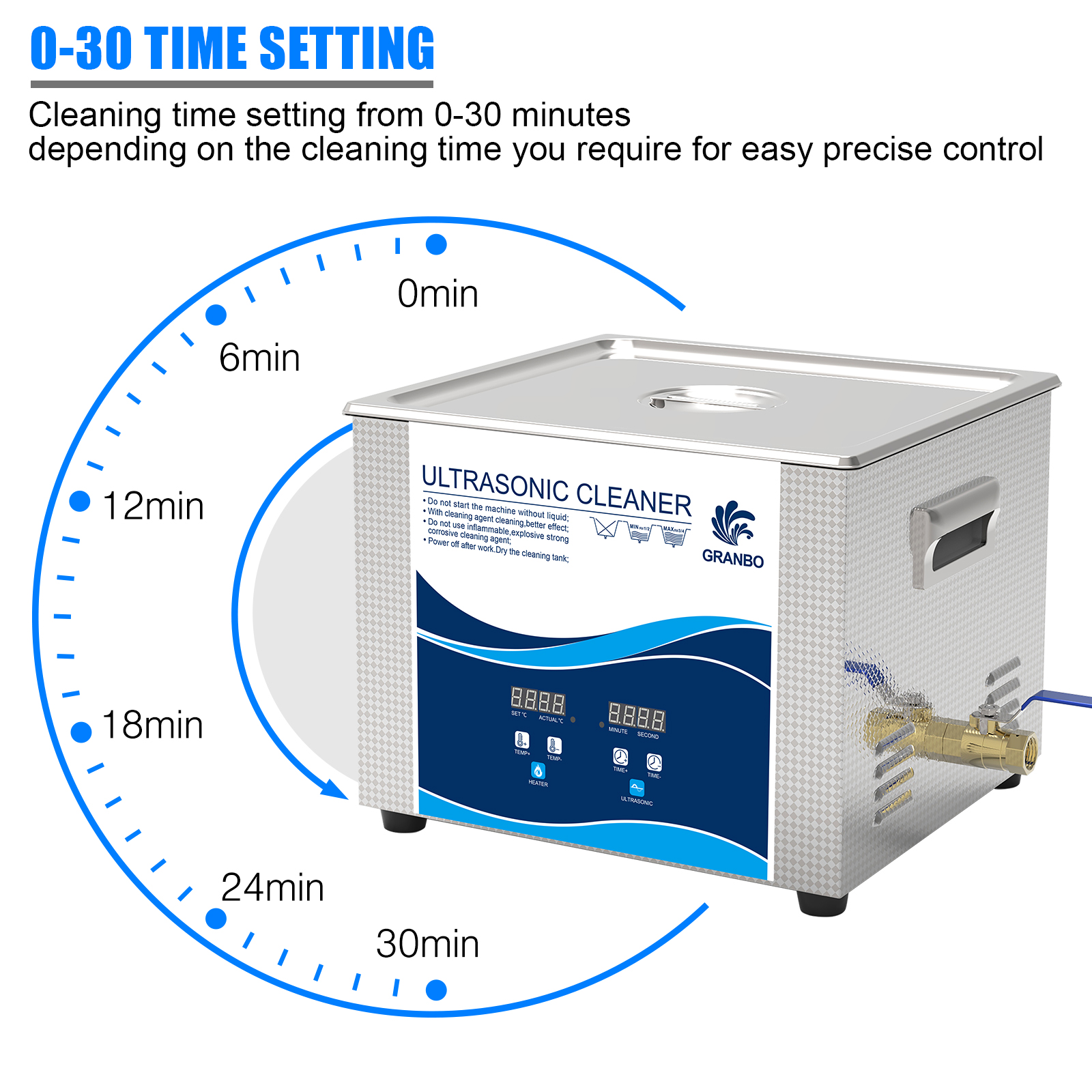
- Non-Abrasive and Safe for Delicate Parts One of the biggest advantages of ultrasound cleaning is its ability to clean without causing physical wear or damage to the part. The non-abrasive nature of the process makes it ideal for delicate components that require cleaning without the risk of scratching, scuffing, or degrading the surface.

- Environmentally Friendly Ultrasound cleaning systems are more environmentally friendly compared to traditional methods that often rely on harsh chemicals or abrasive materials. The use of water-based solutions and the ability to reuse cleaning agents reduces the environmental impact of the cleaning process.

- Improved Equipment Longevity Regular and thorough cleaning of machine parts leads to better performance and extended service life. By ensuring that parts are free of contaminants such as grease and buildup, ultrasound cleaning helps maintain optimal functioning, reducing the risk of malfunctions and expensive repairs.
Applications of Ultrasound Cleaning in Various Industries
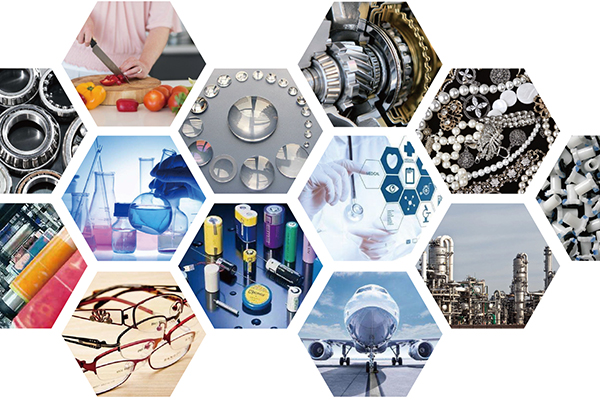
Ultrasound cleaning machines are used in a variety of industries, ranging from automotive to medical devices. Below are some of the key sectors that benefit from ultrasound cleaning technology.
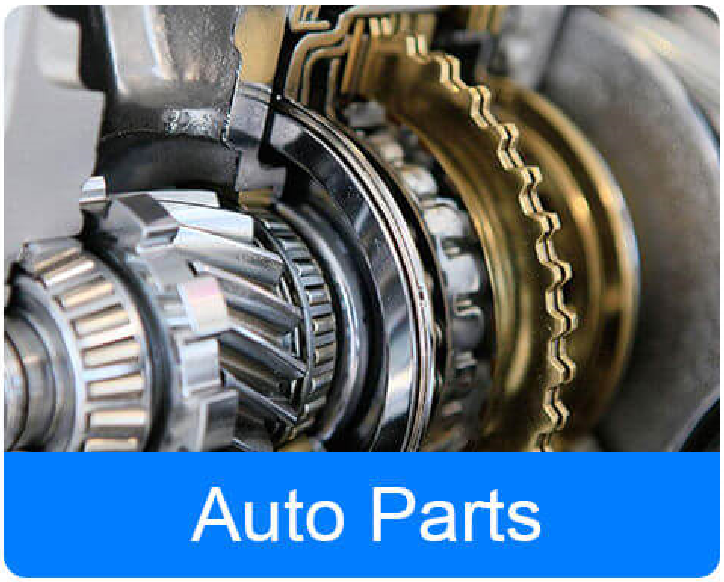
- Automotive Industry In the automotive industry, ultrasound cleaning is often used to clean components such as engine parts, carburetors, fuel injectors, and gears. The ability to clean intricate parts thoroughly ensures that automotive machinery operates smoothly and efficiently, reducing the chances of breakdowns and enhancing performance. Ultrasound cleaning also helps eliminate oil and grease buildup, ensuring that parts are not only clean but also free of substances that could negatively affect engine performance.

- Electronics and Semiconductor Manufacturing Electronic components, including circuit boards, connectors, and microchips, require cleaning to remove contaminants like flux residues, dust, and oils. Ultrasound cleaning is highly effective for cleaning these delicate parts without causing damage. The process ensures that the components are free of contaminants that could interfere with their performance or lead to defects in electronic products.

- Medical Equipment Maintenance Ultrasound cleaning is an essential tool in the medical field, particularly for cleaning surgical instruments, endoscopes, and diagnostic equipment. These instruments often have intricate designs with narrow openings and complex geometries that are difficult to clean manually. Ultrasound cleaning ensures that medical equipment is thoroughly cleaned and sanitized, reducing the risk of contamination and ensuring patient safety.
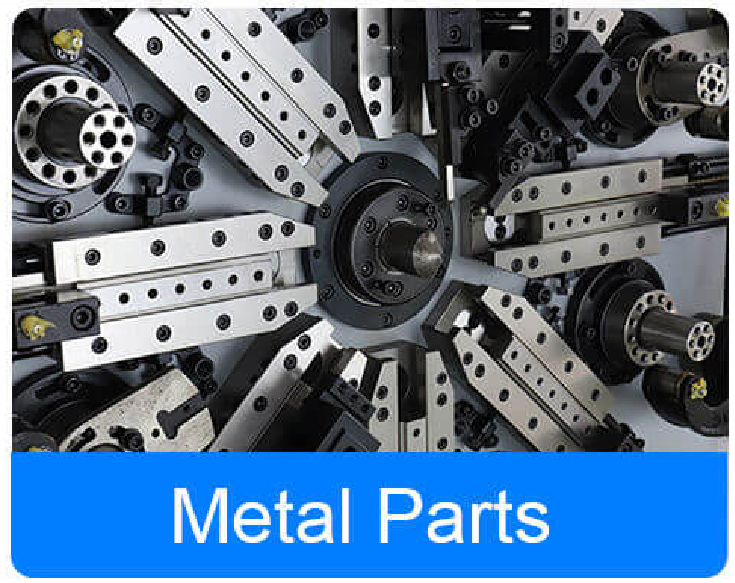
- Aerospace Industry Aerospace components, such as turbine blades, landing gear parts, and fuel systems, require rigorous cleaning to maintain performance and safety. Ultrasound cleaning is used in the aerospace industry to remove contaminants, including metal shavings, oil, and dirt, from these high-precision parts. The thoroughness and gentleness of ultrasound cleaning make it ideal for maintaining the integrity of critical aerospace components.
Choosing the Right Ultrasound Cleaning Machine for Your Needs
When selecting an ultrasound cleaning machine for your machine parts, there are several factors to consider. The type of parts you need to clean, the size of the components, and the type of contaminants will all influence your choice. Here are some key points to keep in mind:

- Frequency and Power Higher frequencies are suitable for cleaning delicate and smaller parts, while lower frequencies are better for larger, more rugged components that require more intense cleaning. Power ratings also vary, and choosing the right power output ensures effective cleaning without overloading the system.
- Tank Size The size of the tank is an important consideration, especially if you need to clean large or bulkier parts. For industries with high throughput or large-scale cleaning requirements, choosing a larger machine with a bigger tank capacity can help improve efficiency.
- Cleaning Solution Compatibility The cleaning solution plays a vital role in the success of the cleaning process. Different solutions work better for specific contaminants, so it is essential to choose a machine that is compatible with the solution you plan to use. Some machines allow for easy solution changes, making them more versatile.
- User-Friendliness and Maintenance A user-friendly interface and ease of maintenance are crucial factors in selecting an ultrasound cleaning machine. Machines that are difficult to operate or require frequent maintenance can slow down productivity and increase operational costs.
- Customization and Special Features Depending on your industry and the specific requirements of your parts, you may need an ultrasound cleaning machine with customizable features. Some machines offer programmable cycles, adjustable temperatures, and multi-stage cleaning processes, allowing for greater flexibility and control.
Future Trends in Ultrasound Cleaning Technology
As industries continue to evolve, ultrasound cleaning technology is also advancing. Future trends indicate a growing emphasis on automation, integration with artificial intelligence (AI), and the development of more sustainable and energy-efficient systems. Some potential developments include:
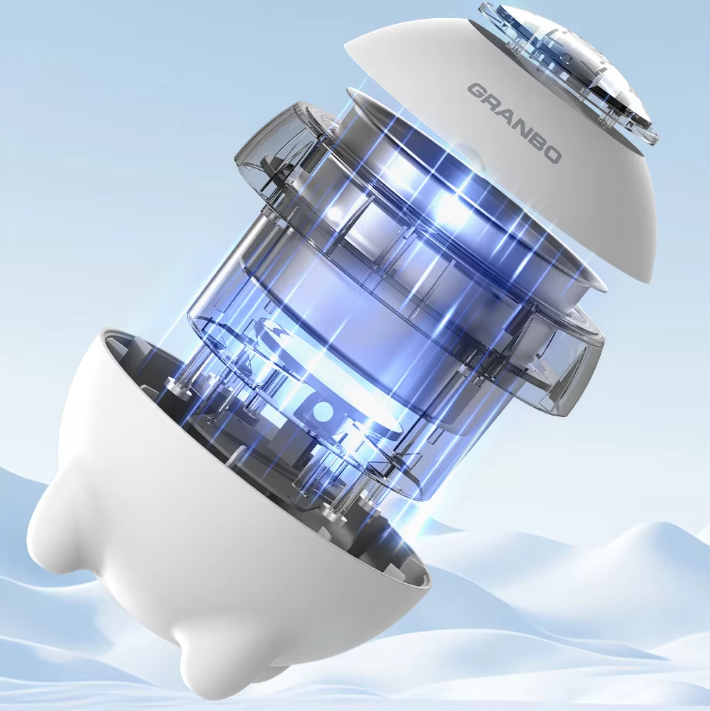
- AI-Powered Cleaning Systems: The integration of AI with ultrasound cleaning machines could lead to smarter systems that can adapt cleaning parameters based on the type of part being cleaned, optimizing efficiency and reducing waste.
- Energy-Efficient Models: As sustainability becomes a top priority in industrial operations, future ultrasound cleaning machines are likely to focus on reducing energy consumption while maintaining high levels of cleaning performance.
- Enhanced Materials and Designs: Advancements in materials science could lead to even more durable and efficient cleaning machines. Improved components may also allow for more compact systems without sacrificing performance.
By embracing these technological advancements, industries can continue to improve the effectiveness and environmental sustainability of their cleaning operations.
Optimizing Your Cleaning Process with Ultrasound Technology
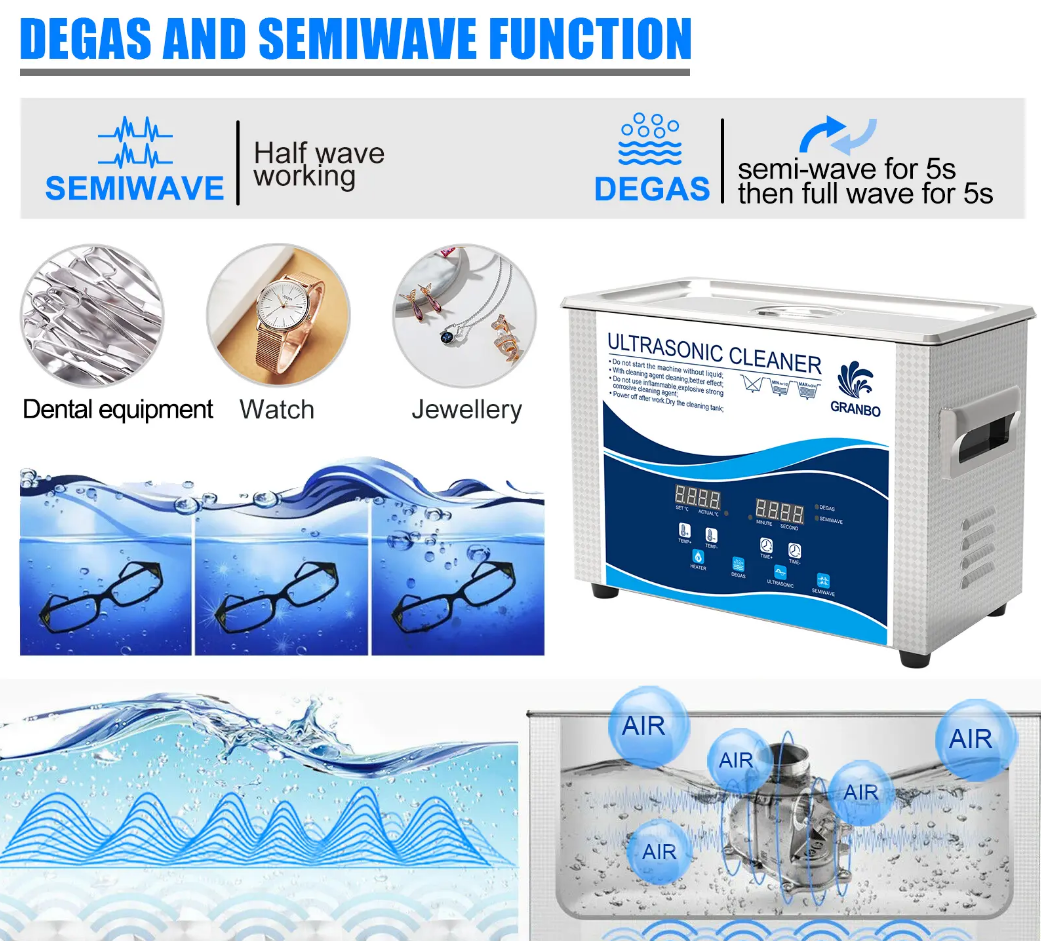
Ultrasound cleaning machines have revolutionized how industries approach machine part maintenance. By offering faster, more efficient, and environmentally friendly cleaning solutions, ultrasound technology is paving the way for better-performing equipment across a wide range of industries. Whether you’re in automotive manufacturing, medical equipment maintenance, or any other sector, integrating ultrasound cleaning machines into your operations can help prolong the lifespan of your machinery, reduce downtime, and improve overall productivity.
In the future, as ultrasound cleaning technology continues to improve and integrate with other advancements like AI and automation, we can expect even greater efficiency and effectiveness in maintaining high-performance machine parts.
References:
- M. K. Weber, et al. (2021). “Ultrasound Cleaning: Principles and Applications in Industrial Cleaning Systems.” Journal of Applied Acoustics, 56(2), 34-45.
- S. S. Lee, et al. (2019). “Ultrasonic Cavitation and its Role in Industrial Cleaning.” International Journal of Industrial Engineering, 45(4), 789-803.
- C. A. Schuster, et al. (2020). “Aerospace Component Cleaning Using Ultrasonic Technology.” Aerospace Engineering Review, 12(3), 121-129.


